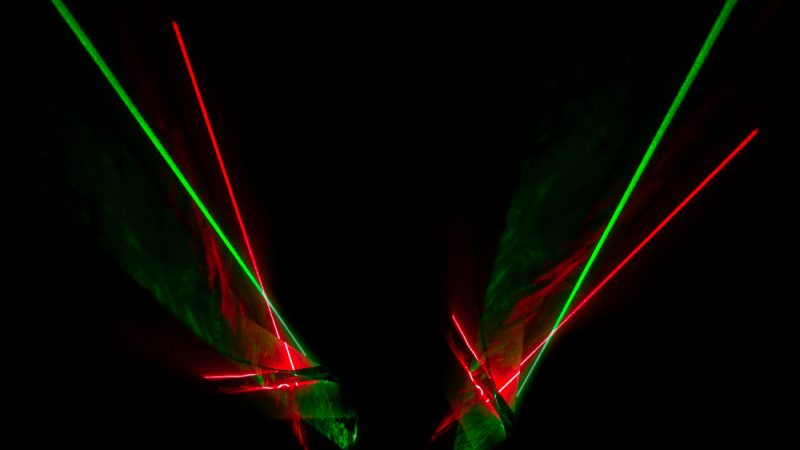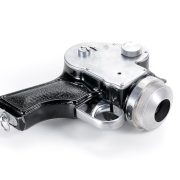Firearms technology has evolved dramatically over the past century, and one of the most significant advancements has been the introduction of laser sights. Once a tool used primarily by law enforcement and the military, laser aiming systems are now accessible to civilian shooters, firearm enthusiasts, and competitive marksmen. A laser on a gun enhances accuracy and confidence by projecting a visible beam of light onto a target, showing exactly where the bullet will likely hit. This article explores how laser sights work, their types, advantages, and how to use them effectively and safely.
The Science Behind Laser Sights
A laser sight operates on the principle of light amplification through stimulated emission of radiation, better known by its acronym: LASER. It emits a concentrated beam of light that travels in a straight line and remains tightly focused over long distances.
When mounted on a firearm, the laser is aligned parallel to the barrel so that the beam indicates the point of impact when the trigger is pulled. The human eye easily detects the laser dot, providing immediate visual feedback. The laser’s precision and low energy consumption make it ideal for aiming systems in handguns, rifles, and tactical weapons.
Components of a Gun Laser System
A typical laser sight includes a few essential components that work together to deliver accurate targeting.
- Laser Diode: This is the core of the device, generating the focused light beam.
- Power Source: Usually a small battery that provides energy to the diode.
- Lens Assembly: Helps focus and project the laser beam at the desired intensity.
- Mounting System: Secures the laser to the firearm, often under the barrel or on a rail system.
- Adjustment Screws: Allow the user to fine-tune the laser alignment for windage and elevation to match the firearm’s point of impact.
Each part must be properly maintained and calibrated to ensure consistent performance and safety.
Types of Laser Sights
Laser sights come in several designs, each offering unique advantages depending on the firearm and user preference.
Red Lasers
Red lasers are the most common and affordable option. They work best in low-light conditions and are easy to see indoors or at close range. However, in bright daylight or at longer distances, red lasers can be harder to detect.
Green Lasers
Green lasers are more visible to the human eye than red lasers, even during the day. They provide excellent visibility in various lighting environments but typically consume more battery power and may be more expensive.
Infrared Lasers
Infrared lasers are invisible to the naked eye and are used primarily by military and law enforcement units with night vision equipment. These lasers allow operators to aim accurately in complete darkness without revealing their position.
Each type of laser has its ideal use case, so the best choice depends on whether the shooter prioritizes visibility, battery life, or tactical concealment.
How Lasers Help Improve Accuracy
Laser sights enhance aiming accuracy by providing a visual indicator of where the muzzle is pointing. When the shooter activates the laser, a small dot appears on the target, showing the likely point of impact.
This immediate feedback allows for quick target acquisition and more precise shot placement, especially under stress or in low-light situations. For beginners, a laser sight can be a valuable training tool to understand proper trigger control and grip alignment. For experienced shooters, it provides a confidence boost and helps maintain accuracy when shooting from unconventional positions or while moving.
Laser Alignment and Zeroing
Proper alignment, also known as zeroing, is crucial for a laser sight to be effective. Zeroing ensures that the laser dot aligns with the bullet’s actual point of impact at a specific distance.
To zero a laser sight, shooters typically mount the firearm securely, aim at a target, and fire a group of shots. They then adjust the windage (horizontal) and elevation (vertical) screws on the laser until the dot aligns with the center of the shot group.
Because the laser and barrel are positioned slightly apart, the point of convergence will only be exact at a chosen distance—usually between 10 to 25 yards for handguns. Shooters may need to re-zero periodically, especially after recoil, impact, or battery replacement.
Advantages of Using a Laser on a Gun
Laser sights provide several key benefits for both beginners and experienced shooters.
- Faster Target Acquisition: The visible dot helps shooters find and engage targets quickly without lining up iron sights.
- Improved Low-Light Performance: Lasers are highly visible in dim environments, offering an edge during nighttime or indoor shooting.
- Enhanced Training Feedback: Lasers reveal even the slightest muzzle movement, helping improve trigger discipline and grip stability.
- Confidence in Defensive Situations: In high-stress scenarios, the laser helps ensure accurate shots when there may be little time to aim traditionally.
- Versatility: Lasers can be used on a variety of firearms, including handguns, rifles, and shotguns.
These benefits make laser sights a valuable tool for improving shooting accuracy, speed, and safety.
Limitations and Considerations
While lasers offer many advantages, they also have limitations that shooters must understand.
- Visibility Range: Bright sunlight can wash out laser dots, reducing visibility outdoors.
- Battery Dependence: Laser sights rely on batteries, which must be checked and replaced regularly.
- Potential Distraction: Overreliance on the laser can cause shooters to neglect fundamental skills such as sight alignment and trigger control.
- Legal Restrictions: Some regions may have regulations regarding laser attachments on firearms, especially for hunting or public carry.
Laser sights are best used as a complement to, not a replacement for, traditional aiming methods. Understanding their limitations helps ensure safe and effective use.
Safety and Responsible Usage
Safety should always be the top priority when using a firearm with a laser.
- Never point the laser at people or animals unless in a defensive situation. The beam can damage eyesight and cause unnecessary alarm.
- Handle the firearm as if it is always loaded. The laser does not make the weapon safer or prevent accidents.
- Regularly inspect your equipment. Ensure the laser mount is secure and batteries are functional.
- Use proper eye protection. While laser sights are low-power, direct exposure to the beam can still cause discomfort or harm.
Following these guidelines maintains responsible firearm ownership and ensures that laser sights are used as intended—for accuracy, not intimidation.
The Future of Laser Aiming Technology
As technology advances, laser sights continue to evolve. Modern systems now integrate with red dot optics, smart sensors, and even Bluetooth-enabled firearms. Some manufacturers are developing adaptive laser systems that automatically adjust brightness based on ambient light or user movement.
Training simulators also use laser technology to replicate real shooting conditions without live ammunition, offering safe and realistic practice. In the future, we can expect even more precise, energy-efficient, and user-friendly aiming solutions that enhance both performance and safety. Laser aiming technology will remain an integral part of the firearms industry for years to come.
Conclusion
Laser sights have revolutionized the way shooters aim and train. By projecting a clear, visible dot onto a target, they simplify the aiming process, improve accuracy, and increase confidence. Understanding how a laser on a gun works—from the components and types to alignment and safety—helps shooters use the technology effectively. While lasers are not a substitute for traditional marksmanship, they are a powerful tool that complements training and enhances performance in various conditions. Whether for personal defense, competition, or law enforcement, laser sights represent the perfect blend of science, precision, and practical innovation.
FAQs
1. How does a laser sight help improve shooting accuracy?
A laser sight projects a visible dot onto the target, showing exactly where the firearm is aimed. This visual reference helps shooters correct their aim quickly and develop better control over their movements.
2. What color laser is best for gun sights?
Green lasers are generally more visible to the human eye, especially in daylight. Red lasers are more affordable and perform well in low-light or indoor settings. The choice depends on your shooting environment and personal preference.
3. Can laser sights be used in bright sunlight?
Yes, but visibility may be limited. Green lasers are more effective in daylight compared to red lasers. For outdoor shooting, choose a high-quality laser sight with strong brightness output.
4. Are laser sights legal for all firearms?
In most places, laser sights are legal for civilian use, but certain hunting regulations or local laws may restrict their application. Always check your local laws before attaching a laser to your firearm.
5. Do laser sights replace traditional sights?
No, laser sights are meant to supplement traditional aiming systems, not replace them. It’s important to practice with both, as batteries can fail or environmental conditions can affect laser visibility.
Also read: Ring Exercises for Beginners – Full Body Gymnastic Workout Guide









